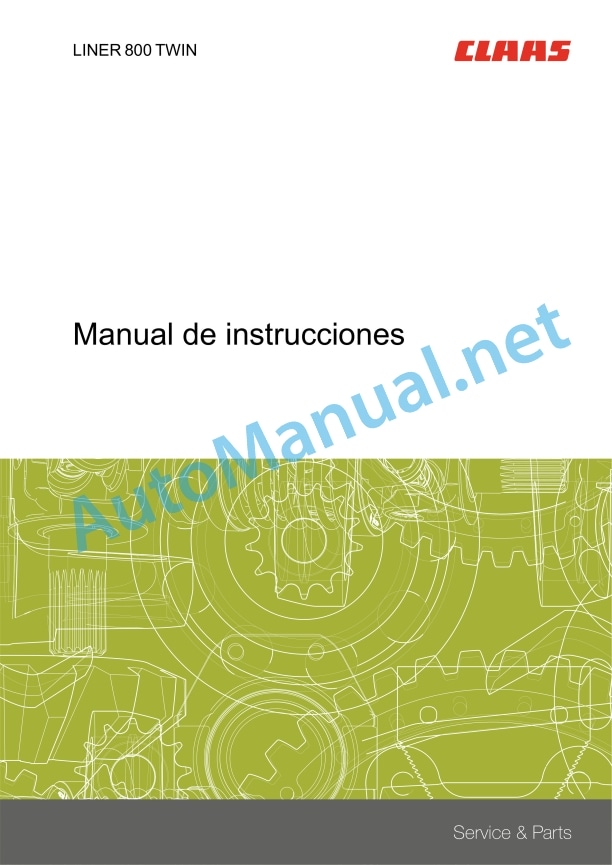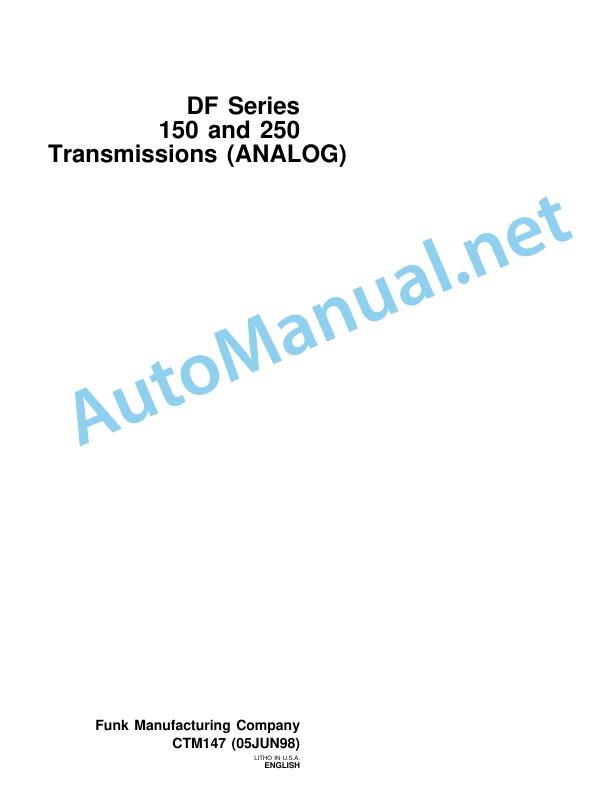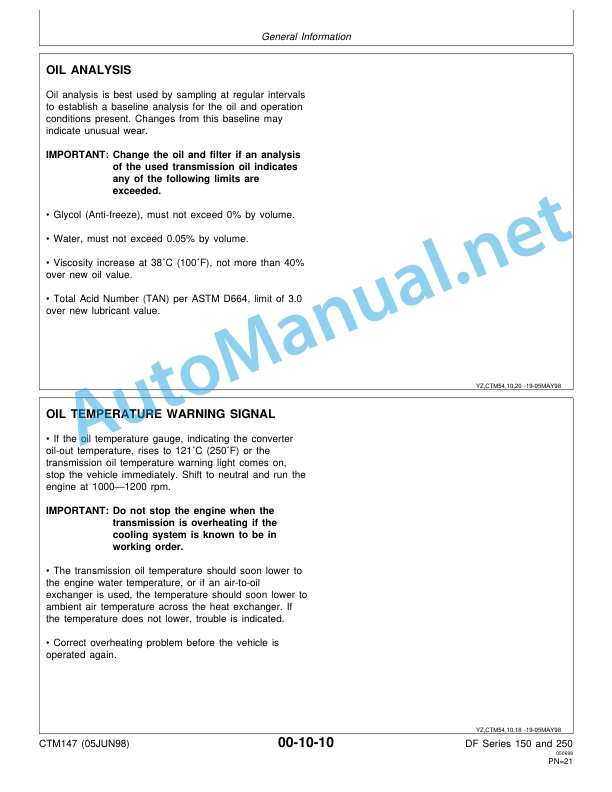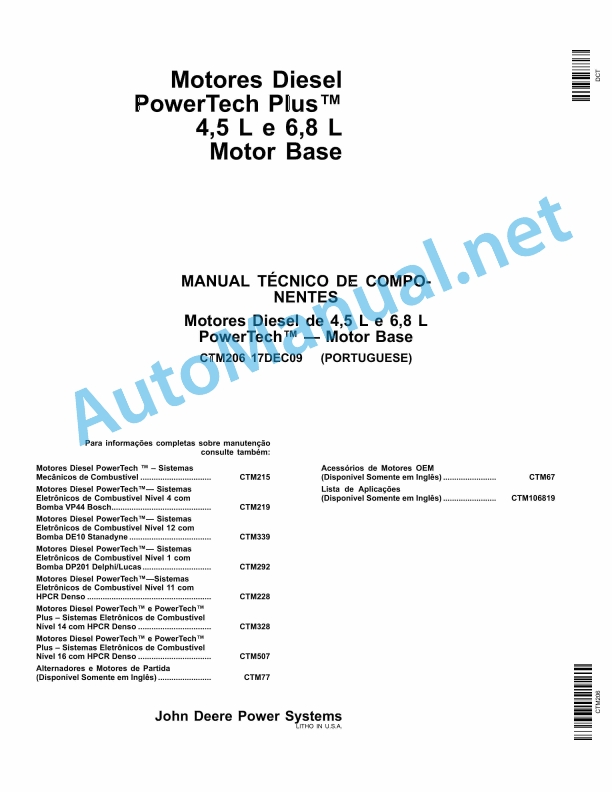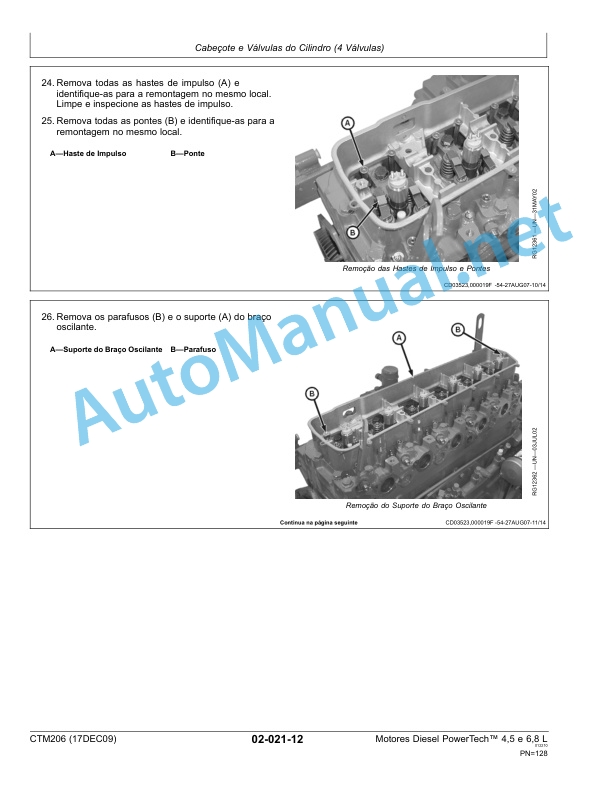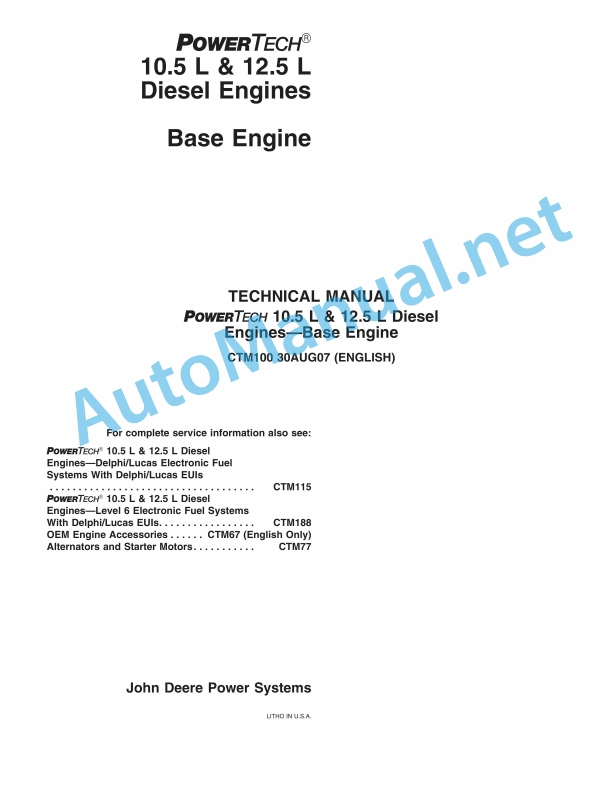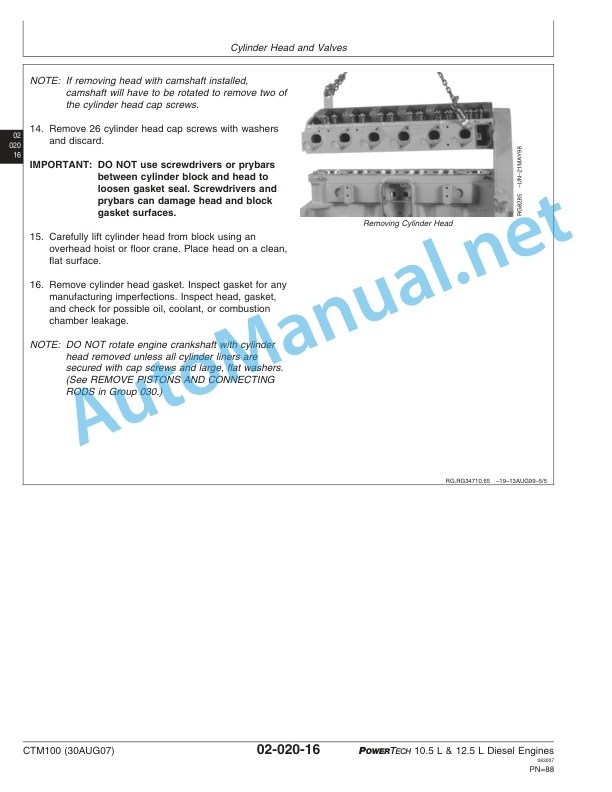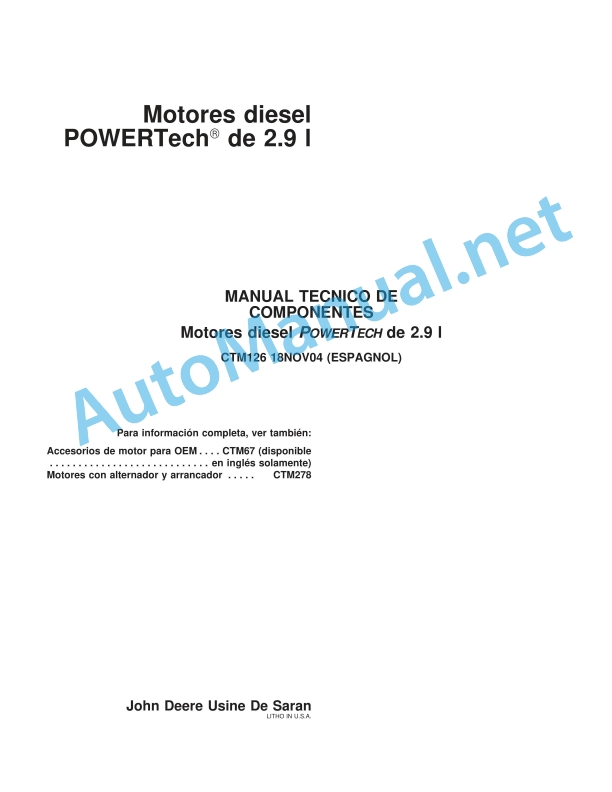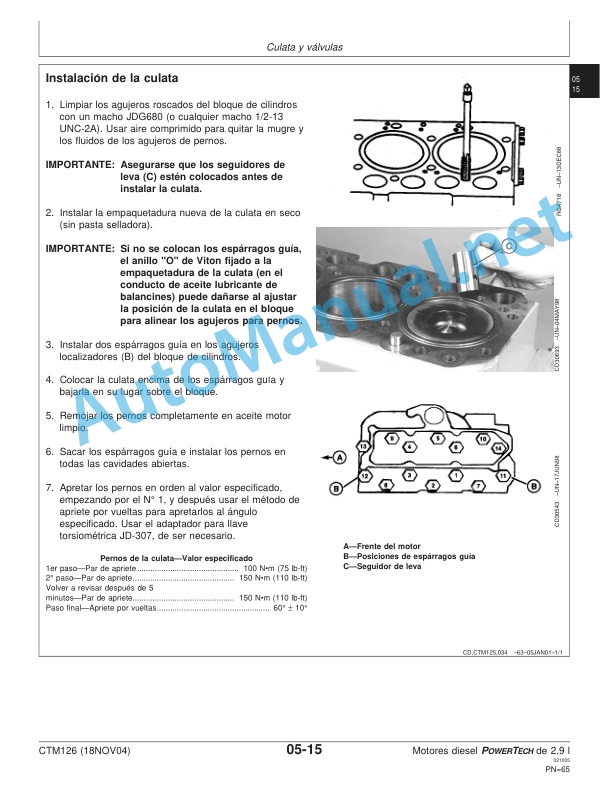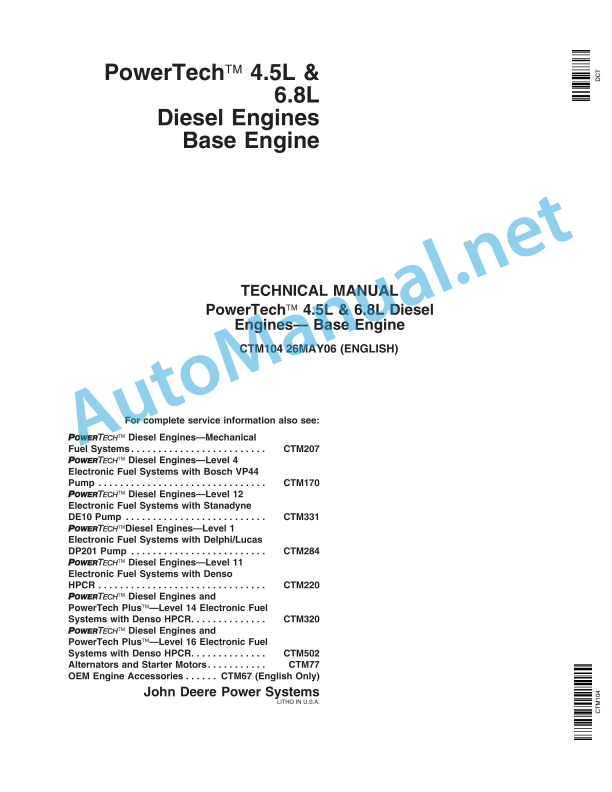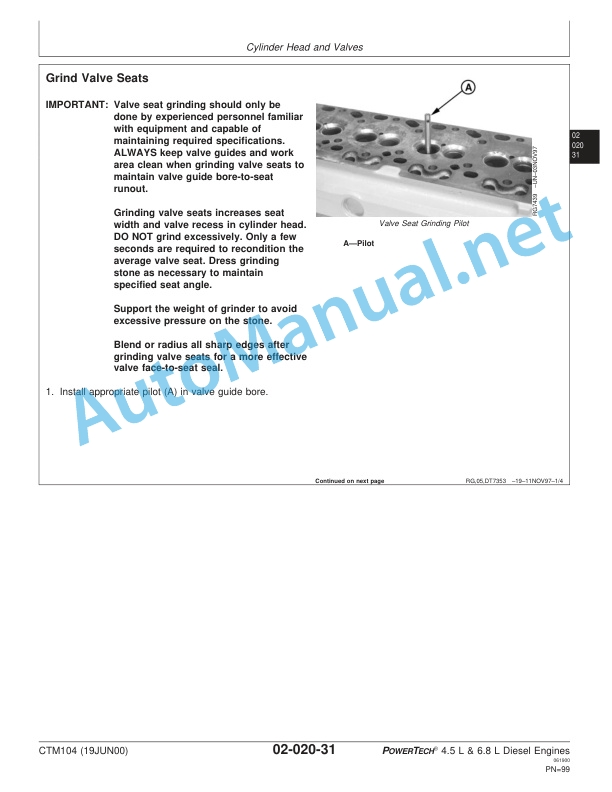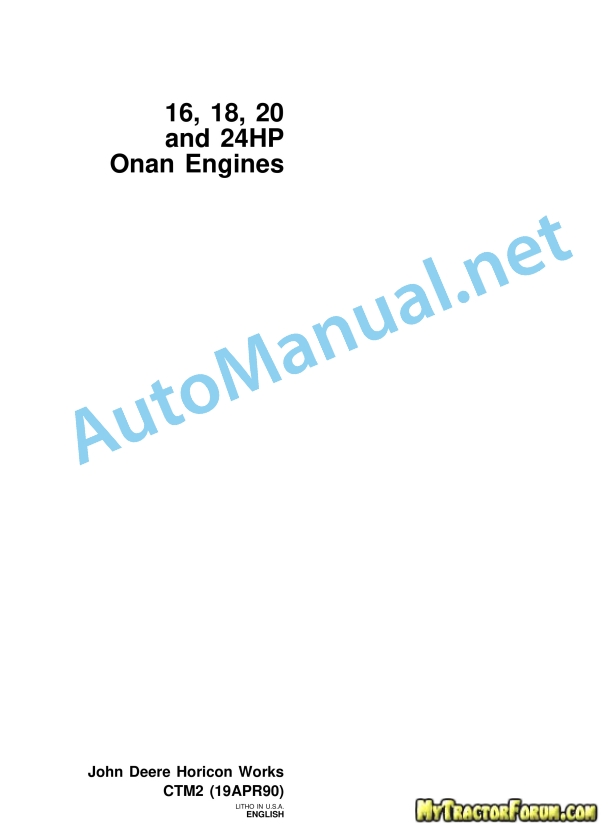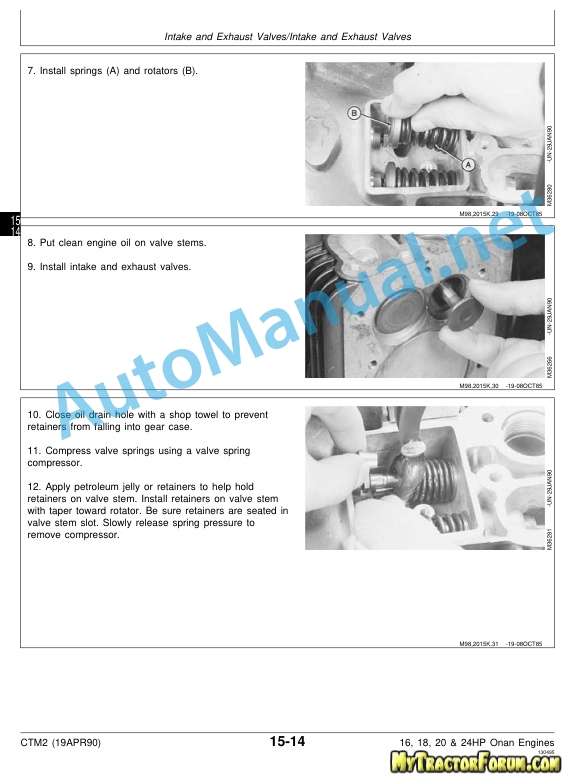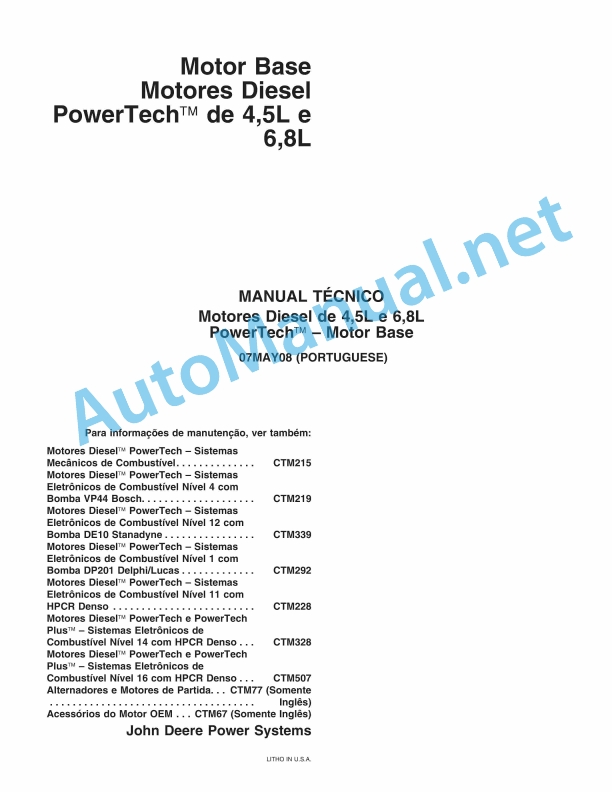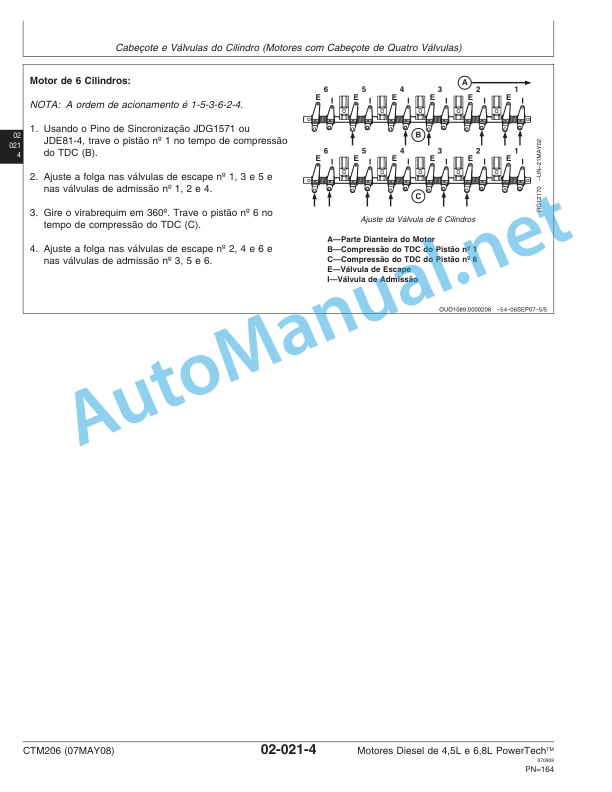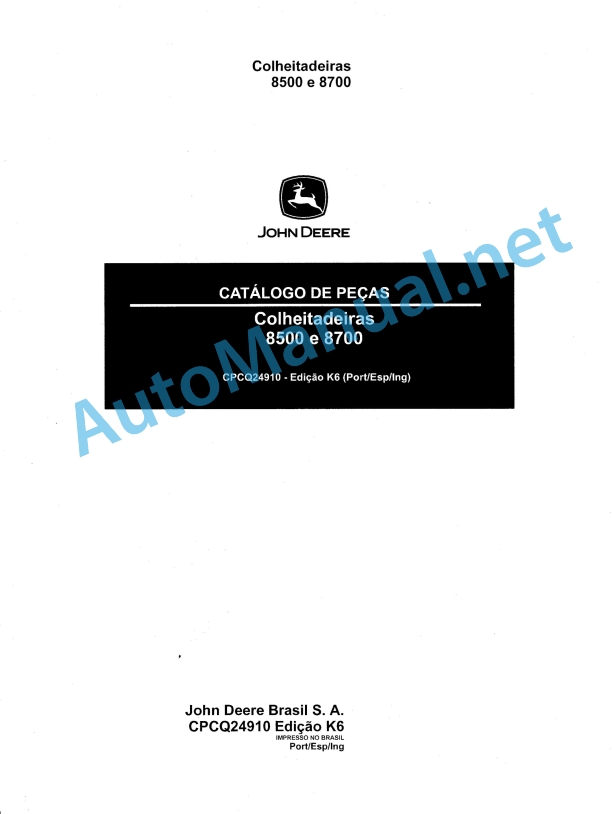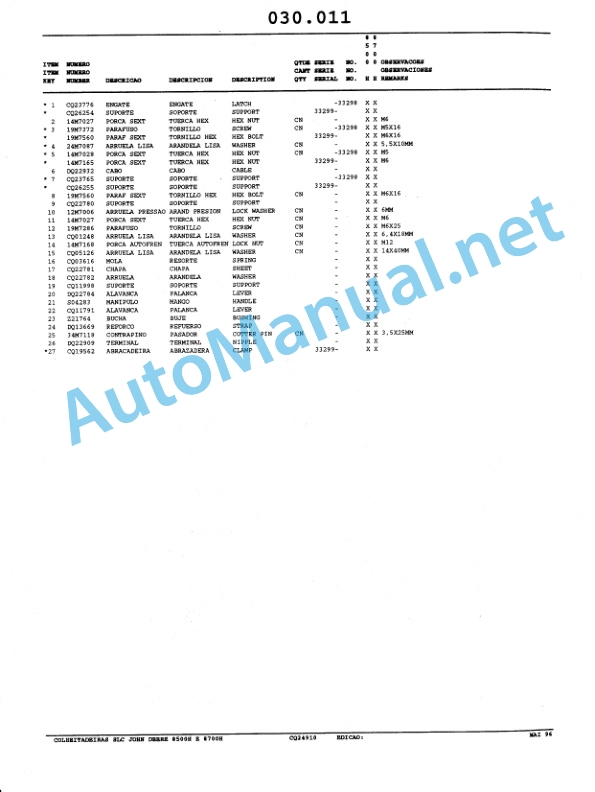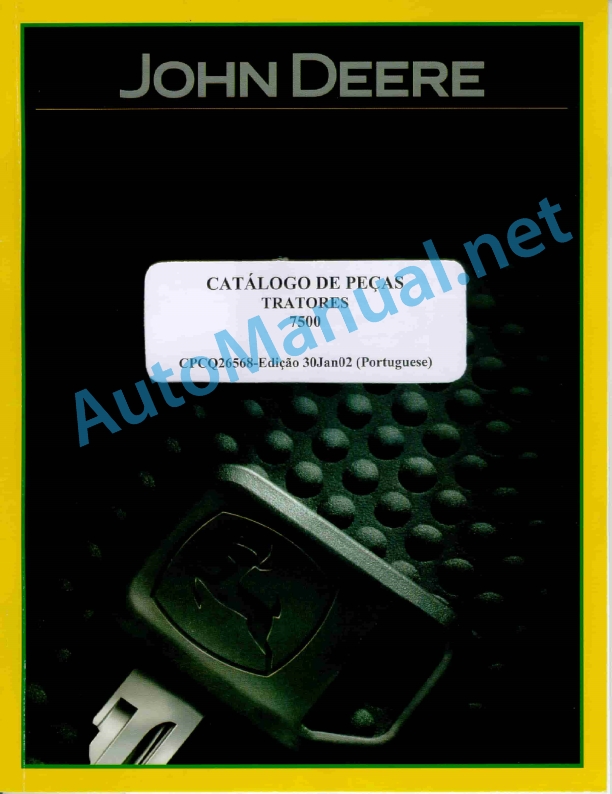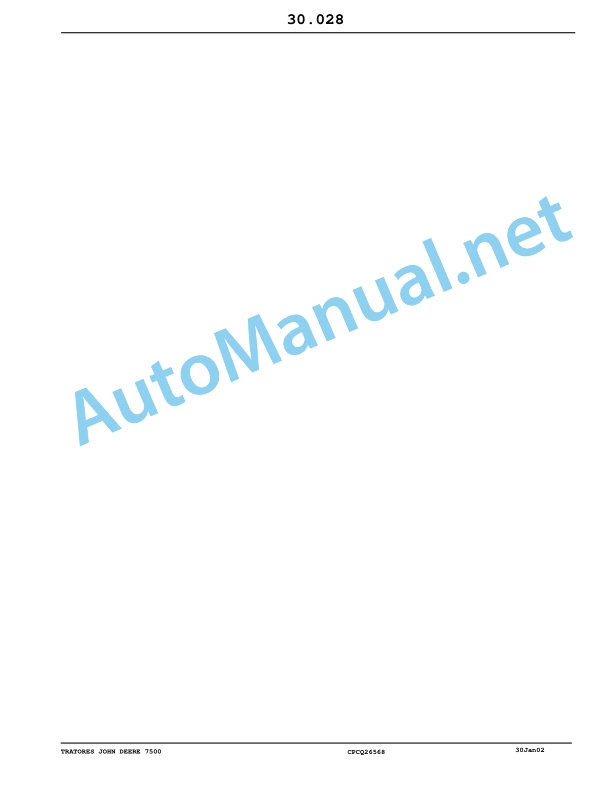Claas Liner 800 (G16) Swathers Operator Manual ES
$50.00
- Model: Liner 800 (G16) Swathers
- Type Of Manual: Operator Manual
- Language: ES
- Format: PDF(s)
- Size: 21.5 MB
File List:
00 0300 987 2.pdf
00 0300 987 2.pdf:
LINER800TWIN
1. Introduction
1.1 Information regarding the instruction manual
1.1.1 Validity of the manual
1.1.2 Information relating to this instruction manual
1.1.3 Symbols and indications
1.1.4 Optional equipment
1.1.5 Qualified specialized workshop
1.1.6 Maintenance information
1.1.7 Information regarding warranty
1.1.8 Technical instructions
1.1.9 Spare parts and technical questions
1.2 Proper application of the machine
1.2.1 Proper machine application
1.2.2 Logically foreseeable inappropriate application
2 Security
2.1 Recognize warning signs
2.1.1 Danger symbols
2.1.2 Keyword
2.2 Safety instructions
2.2.1 Meaning of the instruction manual
2.2.2 Observe graphic danger symbols and alarm indications
2.2.3 Requirements for all people working with the machine
2.2.4 Children in danger
2.2.5 Danger zones
2.2.6 Position yourself between the tractor and the machine
2.2.7 Couple the tractor with the machine
2.2.8 Risk of injury due to rotating shafts
2.2.9 Construction changes
2.2.10 Optional equipment and spare parts
2.2.11 Control of the machine in operation
2.2.12 Operation only after correct commissioning
2.2.13 Technical status
2.2.14 Danger due to damage to the machine
2.2.15 Comply with technical limit values
2.2.16 Danger due to coasting parts
2.2.17 Keep protective devices operational
2.2.18 Personal protective equipment
2.2.19 Wear appropriate clothing
2.2.20 Remove dirt and loose objects
2.2.21 Prepare the machine for road traffic
2.2.22 Dangers when driving on the road and in the countryside
2.2.23 Park the machine safely
2.2.24 Parking without supervision
2.2.25 Unsuitable consumables
2.2.26 Safe handling of consumables and auxiliary materials
2.2.27 Environmental protection and waste disposal
2.2.28 Fire protection
2.2.29 Deadly electrical discharge via overhead lines
2.2.30 Behavior in the case of an overhead line voltage transfer and lightning strike
2.2.31 Liquids under pressure
2.2.32 Hot surfaces
2.2.33 Work only on the stopped machine
2.2.34 Maintenance work and repair work
2.2.35 Machine parts and lifted loads
2.2.36 Danger from welding work
2.3 Safety signage
2.3.1 Structure of graphic hazard symbols
2.3.2 Warning symbols on the machine
3 Machine Description
3.1 Summary and operation
3.1.1 Machine overview
3.1.2 Machine operation
3.2 Optional equipment
3.2.1 Front feeler wheel*
3.2.2 Insertable fork 8 components*
3.2.3 Hydraulic connection parts 3 components*
3.2.4 Hydraulic swath canvas*
3.2.5 Additional swath cloth*
3.2.6 Legal technical equipment of the European Union*
3.2.7 Spare wheel 18.5×8.5-8*
3.2.8 SMV Triangle*
3.3 Identification plates and vehicle identification number
3.3.1 Machine identification plate
3.3.2 Machine identification plate
3.4 Machine information
3.4.1 Adhesive on the machine
4 Control and display instruments
4.1 Control elements
4.1.1 Hydraulic piping
4.1.2 Lance
4.1.3 Windrower rotor
4.1.4 Windrowing canvas
5 Technical data
5.1 LINER 800 TWIN
5.1.1 Dimensions
5.1.2 Weights
5.1.3 Tractor requirements
5.1.4 Acoustic intensity level
5.1.5 Version
5.1.6 Tire measurements
5.1.7 Tire pressure
5.1.8 Lubricants
6 Preparation of the machine
6.1 Turn off the machine and secure it
6.1.1 Turn off the tractor and machine and secure them
6.1.2 Secure the lifted machine
6.2 Adapt the tractor
6.2.1 Check the tractor power take-off protection device
6.3 Adapt the machine
6.3.1 Check the length of the cardan shaft
Shortest working position of the cardan shaft
Longest working position of the cardan shaft
6.3.2 Adapt the length of the cardan shaft
6.3.3 Assemble the cardan shaft to the machine
6.3.4 Place the drawbar on the drawbar
6.4 Hooking up the machine
6.4.1 Remove the security lock*
6.4.2 Hitching the machine with a drawbar
6.4.3 Change the position of the support leg
6.4.4 Assemble the cardan shaft
6.4.5 Attach the safety chain*
6.4.6 Attach the hydraulic hoses
6.4.7 Plug in the cables for lighting
6.4.8 Save shims*
6.4.9 Adjust the height of the lance
6.5 Unhooking the machine
6.5.1 Secure the machine so that it cannot roll
6.5.2 Unplug lighting cables
6.5.3 Uncouple the hydraulic pipes
6.5.4 Dismantle the cardan shaft
6.5.5 Unhooking the safety chain*
6.5.6 Change the position of the support leg
6.5.7 Uncoupling the machine with drawbar
6.5.8 Engage the safety lock*
6.6 Prepare for road traffic
6.6.1 Rotate the swath canvas upwards
6.6.2 Rotate the hydraulic swath curtain up*
6.6.3 Remove the additional swath cloth*
6.6.4 Fold the protective bracket inwards
6.6.5 Remove the tine holder
Front swath rotor
Rear swath rotor
6.6.6 Lift the rotors
6.6.7 Check before driving on the road
6.7 Prepare for use at work
6.7.1 Lower the swath rotor
6.7.2 Assemble the tine holders
6.7.3 Fold the protective bracket outwards
6.7.4 Turn the swath cloth downwards
6.7.5 Turn the hydraulic swath curtain* downwards
6.7.6 Attach the additional swath curtain*
6.8 Load the machine
6.8.1 Lift the machine
7 Management
7.1 Driving on the road
7.1.1 Driving on public roads
7.2 Settings for use at work
7.2.1 Adjusting the transverse inclination of the swath rotor
Change the transverse inclination
7.2.2 Remove the adjustment key
7.2.3 Adjusting the swath rotor in longitudinal direction
Adjust the front swath rotor.
Adjust the rear swath rotor
7.2.4 Adjust the working height
7.2.5 Adjusting the row former
Adjust swath width
Adjust the height of the swath cloth
Adjust the swath cloth to place a swath
Adjust the swath cloth to place two rows.
7.2.6 Adjust the feeler wheel*
7.2.7 Adjust hydraulic sequential control
Adjust hydraulic sequential control
Adjust Elevation:
Adjust descent:
7.3 Use at work
7.3.1 Turn the machine into transport position
7.3.2 Turn the machine to the working position
7.3.3 Adjust the placement of a row
7.3.4 Placing two rows
7.3.5 Using the machine
7.3.6 Raise the swath rotors in position for the end of the plot
7.3.7 Take into account during the field trip
8 Incident and solution
8.1 Chassis
8.1.1 Change wheel on the rotor chassis
8.2 Electrical and electronic system
8.2.1 Defective bulb
8.2.2 Defective bulbs
9 Maintenance
9.1 Summary of maintenance intervals
9.1.1 Before harvest
9.1.2 After the first 10 hours of service
9.1.3 After the first 50 hours of service
9.1.4 Every 8 hours of operation or daily
9.1.5 Every 20 hours of service
9.1.6 Every 50 hours of service
9.1.7 Every 500 hours of service or annually
9.1.8 After harvest
9.2 Gearbox
9.2.1 Check the tightness of the gear
9.2.2 Check main gear oil levels
Up in the main gear
Down in the main gear
9.2.3 Change main gear oils
Up in the main gear
Down in the main gear
9.2.4 Check the oil levels of the swath gears
9.2.5 Change the swath gear oils
9.2.6 Retighten the screws on the swath gear
9.3 Clutches
9.3.1 Check the overload clutch
9.3.2 Clean the ratchet clutch
9.4 Cardan shaft
9.4.1 Maintenance of cardan shafts
9.5 Chassis
9.5.1 Check tire pressure
9.5.2 Check the wheel nuts on the rotor chassis
9.5.3 Check the rotor chassis screws
9.6 Hydraulic installation
9.6.1 Carry out maintenance on the hydraulic installation
9.6.2 Check the hydraulic hoses
9.7 Framework
9.7.1 Check the screws on the frame
9.8 Windrower rotor
9.8.1 Check the spring
9.8.2 Check the tines
9.9 Assembly and body parts
9.9.1 Eliminate crop remains
9.9.2 Clean the machine
9.9.3 Maintain the machine
9.9.4 Check the fixing material
9.10 Greasing scheme
9.10.1 Grease the lubrication points every 8 hours of service
9.10.2 Grease the lubrication points every 20 hours of service
9.10.3 Grease the lubrication points every 50 hours of service
10 Decommissioning and waste disposal
10.1 General information
10.1.1 Decommissioning and waste disposal
11 EC declaration of conformity
11.1 LINER 800 TWIN
11.1.1 EC declaration of conformity
12 Technical dictionary and abbreviations
12.1 Terms and explanations
12.1.1 Abbreviations
12.1.2 Technical vocabulary
John Deere Repair Technical Manual PDF
John Deere DF Series 150 and 250 Transmissions (ANALOG) Component Technical Manual CTM147 05JUN98
John Deere Repair Technical Manual PDF
John Deere Repair Technical Manual PDF
John Deere Repair Technical Manual PDF
John Deere Diesel Engines POWERTECH 2.9 L Component Technical Manual CTM126 Spanish
John Deere Repair Technical Manual PDF
John Deere Repair Technical Manual PDF
John Deere Repair Technical Manual PDF
John Deere 16, 18, 20 and 24HP Onan Engines Component Technical Manual CTM2 (19APR90)
John Deere Repair Technical Manual PDF
John Deere Diesel Engines PowerTech 4.5L and 6.8L – Motor Base Technical Manual 07MAY08 Portuguese
John Deere Parts Catalog PDF
John Deere Harvesters 8500 and 8700 Parts Catalog CPCQ24910 Spanish
John Deere Parts Catalog PDF
John Deere Tractors 7500 Parts Catalog CPCQ26568 30 Jan 02 Portuguese


